
To discuss:
How do you think that you would respond in a similar situation? Why?
Case summary:
The nursing student was offered to catheterize Mrs. B, a 72-year-old patient. The student reviewed the procedure and went to the patient’s room accompanied by the clinical instructor along with the catheterization supplies. After introducing themselves to the patient, the nursing student started to open the sterile package, prepared the sterile field, and cleansed the meatus. The nursing student has contaminated the catheter in one quick moment as the patient asked a question and diverts the instructor’s eye. Considering the importance of sterility and nosocomial infections, the nursing student told the instructor what happened, obtained a new kit and started proceeding.
Explanation of Solution
In a similar situation, the nursing student should follow the same thing what the nursing student did in the given scenario. In this situation, the patient has undergone abdominal surgery and would have already developed a wound infection. Insertion of the contaminated catheter would increase her risk for an additional infection. Thus, the contaminated catheter should not be used for this patient in this situation. The nursing student must admit the fault and report it to the instructor and should request for another new catheter.
To discuss:
Do you agree with the criteria that the nursing student used to evaluate a successful outcome? Why or why not?
Case summary:
The nursing student was offered to catheterize Mrs. B, a 72-year-old patient. The student reviewed the procedure and went to the patient’s room accompanied by the clinical instructor along with the catheterization supplies. After introducing themselves to the patient, the nursing student started to open the sterile package, prepared the sterile field, and cleansed the meatus. The nursing student has contaminated the catheter in one quick moment as the patient asked a question and diverts the instructor’s eye. Considering the importance of sterility and nosocomial infections, the nursing student told the instructor what happened, obtained a new kit and started proceeding.
Explanation of Solution
The criteria which the nursing student used to evaluate a successful outcome are:
- The patient should be benefited from the nurse’s action or at the very least should not be harmed.
- No one’s integrity should be sacrificed or harmed.
- The standards of nursing practice or the American Nurses Association Code of Ethics should not be violated.
All these criteria were found be agreed because the fundamental principle of nursing is to provide safe care to the patient in a beneficial manner. The patient should not be harmed; the integrity of the nursing student should be maintained; and the ethical values should not be violated.
To discuss:
What knowledge, skill, and attitude do you need to develop to continuously improve quality and safety when caring for patients like Mrs. B?
Case summary:
The nursing student was offered to catheterize Mrs. B, a 72-year-old patient. The student reviewed the procedure and went to the patient’s room accompanied by the clinical instructor along with the catheterization supplies. After introducing themselves to the patient, the nursing student started to open the sterile package, prepared the sterile field, and cleansed the meatus. The nursing student has contaminated the catheter in one quick moment as the patient asked a question and diverts the instructor’s eye. Considering the importance of sterility and nosocomial infections, the nursing student told the instructor what happened, obtained a new kit and started proceeding.
Explanation of Solution
The nursing student should be alert and careful while proceeding catheterization. Before performing the procedure the nursing student should explain this procedure to the patient. The nursing student should avoid distractions and conversations while doing the catheterization. The nursing student should follow the safety instructions before starting the procedure and should stay confident while doing the procedure.
Want to see more full solutions like this?
Chapter 24 Solutions
EP CPE+TAYLOR FUNDAMENTALS OF NURSING
- true or false any practice employee is authorized to and should communicate collection guidelines with practice?arrow_forwardrtrue or false equesting a listing of specific creditreferences during patient intake os an acceptable business practice?arrow_forwardgive an overview on the respiratory assessmentarrow_forward
- explain an abdominal exam?arrow_forwardDiscuss β -Lactam antibiotics under the following subheadings Classifications of penicillins Classification of Cephalosporins General Mechanism of Actions Clinical Indications of penicillins and cephalosporins Adverse effects of β-lactamsarrow_forwarda. Define neoplasm b. Differentiate between benign and malignant tumours c. Describe the molecular basis of cancerarrow_forward
- differentiate the extra heart sounds S3,S4, murmurs and gallopsarrow_forward• Define shock and list types of shock • Discuss pathogenesis of septic shock. • Enumerate the stages of shock. • Define oedema and describe the pathophysiologic mechanisms of oedema with examples.arrow_forwardDiscuss Hypertension under the following headings: Definition Diagnosis Non-pharmacological intervention Drugs Classification Management of a Hypertensive emergencyarrow_forward
- Explain how the answer could be 2 or 1.8 WITHOUT changing the questionarrow_forwardoverview of the neurological system, cranial nerves and what part of the body it innervatesarrow_forwarddifferentiate structure and function of the peripheral vascular system. what are the normal and abnormal findings of the peripheral arterioles and peripheral venous systemarrow_forward
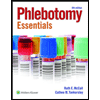 Phlebotomy EssentialsNursingISBN:9781451194524Author:Ruth McCall, Cathee M. Tankersley MT(ASCP)Publisher:JONES+BARTLETT PUBLISHERS, INC.
Phlebotomy EssentialsNursingISBN:9781451194524Author:Ruth McCall, Cathee M. Tankersley MT(ASCP)Publisher:JONES+BARTLETT PUBLISHERS, INC.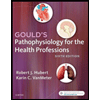 Gould's Pathophysiology for the Health Profession...NursingISBN:9780323414425Author:Robert J Hubert BSPublisher:Saunders
Gould's Pathophysiology for the Health Profession...NursingISBN:9780323414425Author:Robert J Hubert BSPublisher:Saunders Fundamentals Of NursingNursingISBN:9781496362179Author:Taylor, Carol (carol R.), LYNN, Pamela (pamela Barbara), Bartlett, Jennifer L.Publisher:Wolters Kluwer,
Fundamentals Of NursingNursingISBN:9781496362179Author:Taylor, Carol (carol R.), LYNN, Pamela (pamela Barbara), Bartlett, Jennifer L.Publisher:Wolters Kluwer,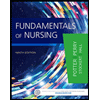 Fundamentals of Nursing, 9eNursingISBN:9780323327404Author:Patricia A. Potter RN MSN PhD FAAN, Anne Griffin Perry RN EdD FAAN, Patricia Stockert RN BSN MS PhD, Amy Hall RN BSN MS PhD CNEPublisher:Elsevier Science
Fundamentals of Nursing, 9eNursingISBN:9780323327404Author:Patricia A. Potter RN MSN PhD FAAN, Anne Griffin Perry RN EdD FAAN, Patricia Stockert RN BSN MS PhD, Amy Hall RN BSN MS PhD CNEPublisher:Elsevier Science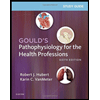 Study Guide for Gould's Pathophysiology for the H...NursingISBN:9780323414142Author:Hubert BS, Robert J; VanMeter PhD, Karin C.Publisher:Saunders
Study Guide for Gould's Pathophysiology for the H...NursingISBN:9780323414142Author:Hubert BS, Robert J; VanMeter PhD, Karin C.Publisher:Saunders Issues and Ethics in the Helping Professions (Min...NursingISBN:9781337406291Author:Gerald Corey, Marianne Schneider Corey, Cindy CoreyPublisher:Cengage Learning
Issues and Ethics in the Helping Professions (Min...NursingISBN:9781337406291Author:Gerald Corey, Marianne Schneider Corey, Cindy CoreyPublisher:Cengage Learning





